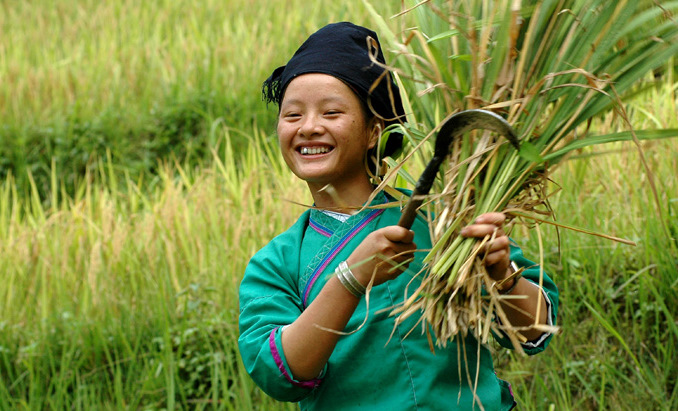
Country at glance:
Vietnam
is the easternmost country on the Indochina
Peninsula in Southeast
Asia. It is bordered by China
to the north, Laos to the
northwest, Cambodia to the
southwest, and the South China Sea, referred to as East Sea
to the east.
Geography and climate
Vietnam is approximately 331,688 km² (128,066 sq mi)
in area (not including Hoang Sa and Truong Sa islands) The perimeter of the
country running along its international boundaries is 4,639 km (2,883 mi). The
topography consists of hills and densely forested mountains, with level land
covering no more than 20%. Mountains account for 40% of the area, with smaller
hills accounting for 40% and tropical forests 42%.
The northern part of
the country consists mostly of highlands and the Red River Delta. Fansipan,
located in Lao Cai province, is the highest mountain in Vietnam at
3,143 m (10,312 ft). The south is divided into coastal lowlands, Annamite Chain
peaks, extensive forests, and poor soil. Comprising five relatively flat
plateaus of basalt soil, the highlands account for 16% of the country's arable
land and 22% of its total forested land.
The delta of the Red River (also known as the Song Hong), a flat,
triangular region of 15,000 km2 (5,792 sq mi), is smaller but more intensely
developed and more densely populated than the Mekong River Delta. Once an inlet
of the Gulf of Tonkin, it has been filled in by the
enormous alluvial deposits of the rivers over a period of millennia, and it
advances one hundred meters into the Gulf annually. The Mekong delta, covering
about 40,000 km2 (15,444 sq mi), is a low-level plain no more than three meters
above sea level at any point and criss-crossed by a maze of canals and rivers.
So much sediment is carried by the Mekong's
various branches and tributaries that the delta advances sixty to eighty meters
into the sea every year.
Because of differences
in latitude and the marked variety of topographical relief, the climate tends
to vary considerably from place to place. During the winter or dry season,
extending roughly from November to April, the monsoon winds usually blow from
the northeast along the China
coast and across the Gulf
of Tonkin, picking up
considerable moisture; consequently the winter season in most parts of the
country is dry only by comparison with the rainy or summer season.
The average annual
temperature is generally higher in the plains than in the mountains and
plateaus and in the south than in the north. Temperatures in the southern
plains (Ho Chi Minh City and the Mekong Delta) varies less, going between 21
and 28 °C (70 and 82.5 °F) over the course of a year. The seasons in the mountains
and plateaus and in the north are much more dramatic, and temperatures may vary
from 5 °C (41 °F) in December and January to 37 °C (98.6 °F) in July and
August.
Population
Vietnam
has 82,2 million inhabitants with an average density of 248 inhabitants/km2,
reaching 1,000 in the Red River delta in the
North.
88% of the population
is Viet, 2% Chinese and 1.5% Khmer. Numerous ethnic minorities make up the rest
of the population of Vietnam:
Muong, Nung, Dao, Thai, Cham, Hmong and various mountain-dwellers.
The dominant religions
are Buddhism (55% of the population) and Catholicism (8% to 10% of the
population). Confucianism, Taoism, Hoa Hao, Muslim and Caodaism represent
around 35% of the population.
Languages
Vietnamese is the
official language although English is increasingly spoken by younger Vietnamese
in main cities. Some people and especially elderly still speak French, while
middle-aged speak Russian.
Transportation
By air: There are three international airports in
Vietnam: Noi Bai in Hanoi located 45 minutes from the town centre, Danang in
the Centre, 4 km from the heart of the town, and Tan Son Nhat in Ho Chi Minh
City located 20 minutes from the town centre.
By road: The road network has improved but still needs
to be upgraded in some areas. To cover a distance, it is reasonable to count an
average speed of 50 km/hour.
By train: It takes a minimum of 32 hours from Hanoi to Ho Chi
Minh City. Although we can now find carriages with
soft sleepers and air-conditioning, it is slow and not really comfortable but
for a short-term journey, it is an interesting means of transportation and way
to see Vietnam.
Shopping
Prices displayed are
usually fixed, but in other cases, bargaining is a fact of life in Vietnam!
Tipping
Tipping is not
mandatory although it is appreciated. Note that prices in hotels and
restaurants usually include 10% for VAT and 5% for service charges.